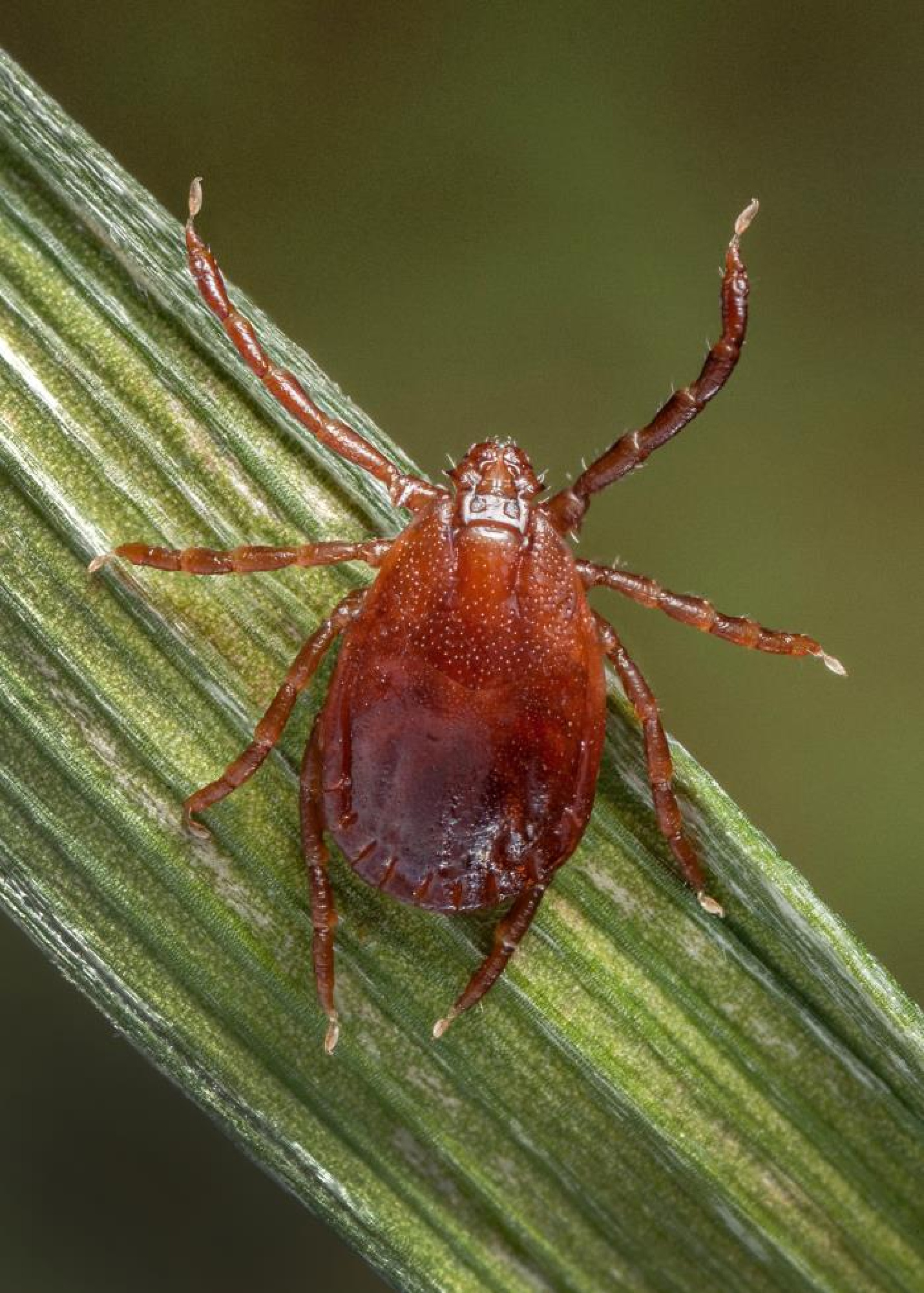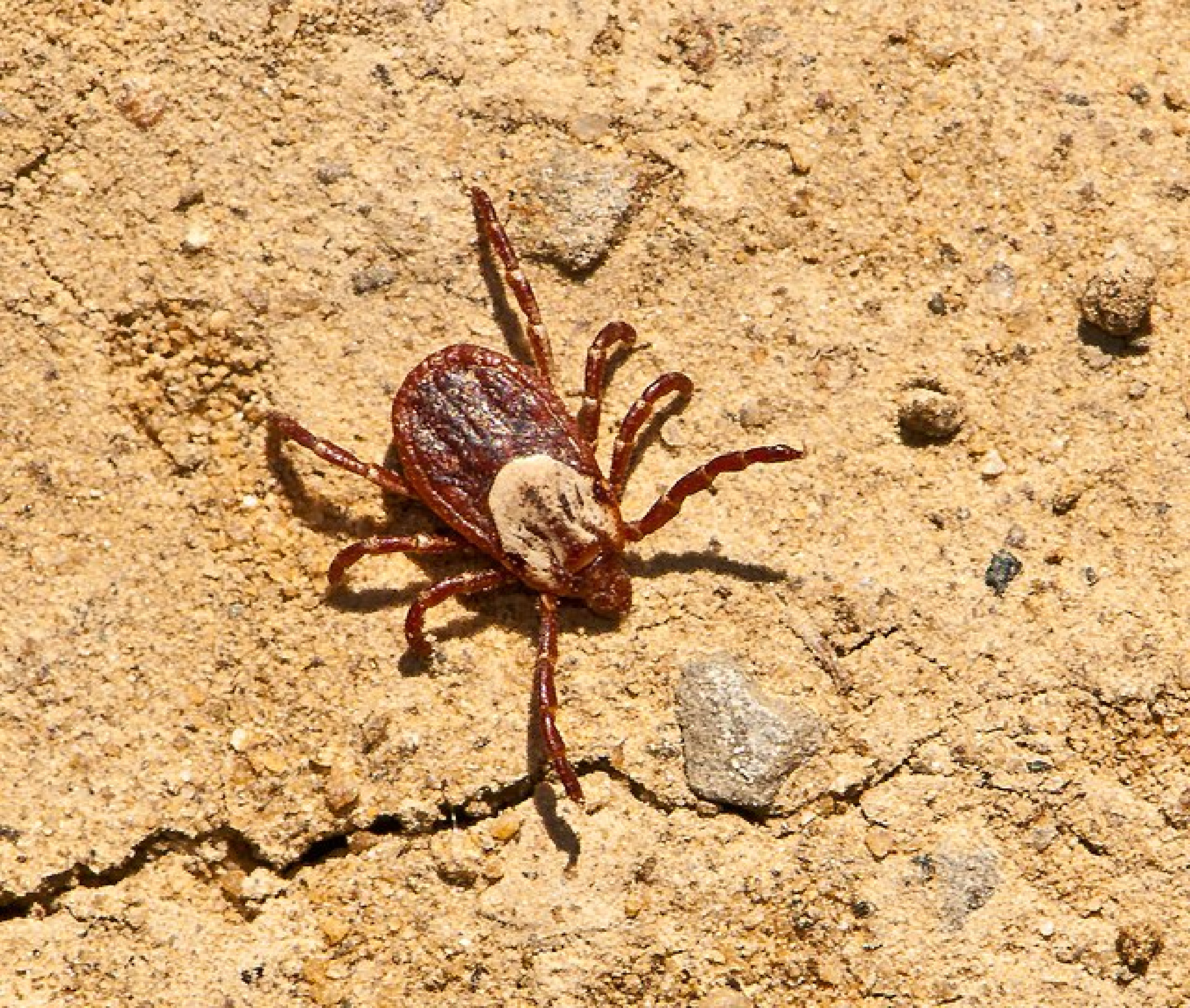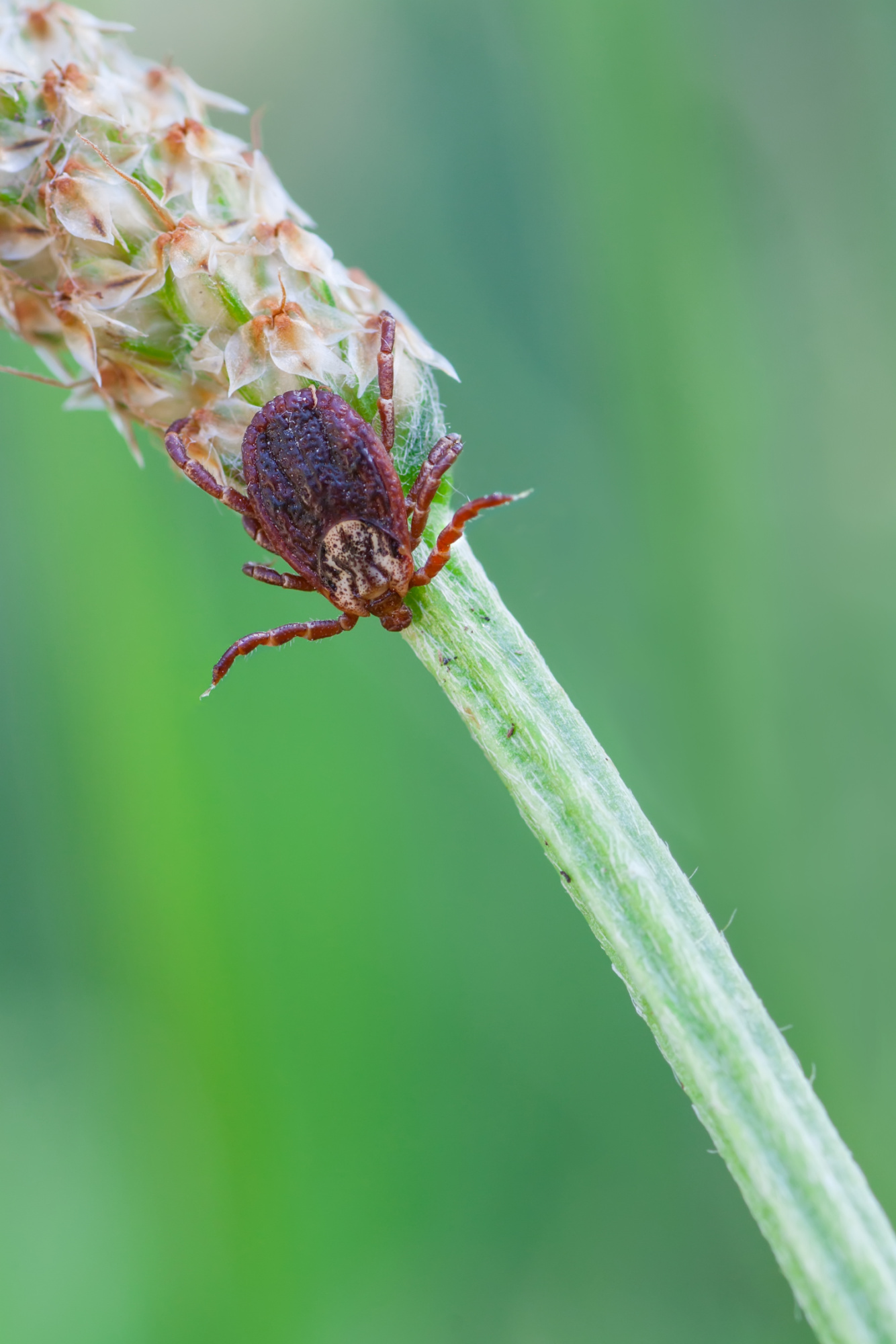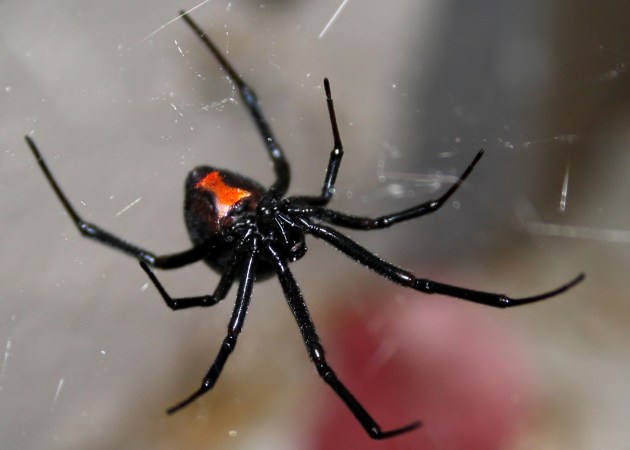If it seems like ticks are everywhere these days, that’s because they are. There are many different types of ticks that have adapted for a variety of climates, and they continue adapting and expanding their range amid climate change. From New England and the northern reaches of Canada to the American Southwest, everyone needs to be on the lookout for ticks, which can carry serious diseases. Outdoorsmen and women are particularly at risk, but even folks who don’t go outside much can pick up ticks in their yard or from their dogs. That’s why it’s important to be able to identify the types of ticks that live in your area.
The Life-Cycle of a Tick
While it can feel like ticks target us humans far too often, ticks will actually feed on most living animals, including birds, mammals, reptiles, and even a few amphibians.
“A lot of these types of ticks are generalist feeders that are willing to feed on whatever wanders past,” says Griffin Dill, the Tick Lab coordinator for the University of Maine’s Diagnostic and Research Laboratory. “They don’t have any specific affinity for one host versus another.”

These crab-like arthropods have four life stages (egg, larvae, nymph, and adult) and most ticks prefer to find a different host animal at each stage of life. While life cycles are species-specific, ticks tend to grow and find hosts to feed on in the spring and summer before going inactive during the late fall and winter. In the first spring, tick larvae emerge from their eggs and, depending on the species, they may or may not be disease carriers at this early stage. After spending part of their life cycle on small animals, they often acquire pathogens, some of which cause disease in humans and other animals.
Once the larvae have fed for a few days (usually on the smallest animals, like birds or mice), they drop off and molt into nymphs. While both nymphs and larvae are very small, larvae only have six legs, while nymphs are larger and have eight legs (like the adults). Once the nymphs have fed for a few days, they will drop off to molt again and become adults. Adult females eagerly attack humans and larger animals in order to engorge themselves with blood. Once full, they drop off to lay an egg mass, which can contain as many as 4,000 individual eggs, depending on the tick size and species. Depending on the tick species, this whole process can take two to three years.
Hard Ticks vs. Soft Ticks
Even the most experienced outdoorsmen might not know that there are two primary categories of ticks out there: hard ticks and soft ticks. Dill says that most of us will only ever interact with hard ticks. In fact, if you were to Google an image of a soft tick, you would encounter a small, mite-looking bug that you’ve likely never seen before.

Hard ticks differ from soft ticks in their basic construction. Hard ticks have a shell-like plate that resembles a backpack or a shield and sits right behind their mouths, giving them the classic pear or teardrop shape. In males, this plate, which is called a scutum, covers their whole back. In females, however, it might only cover the upper half of their back, while the lower half is made of a softer material that’s more flexible for carrying eggs. That soft material also allows female ticks to get much bigger while engorged, Dill says.
“It’s not to say you can’t encounter soft ticks, because of course people can and do,” Dill tells Outdoor Life. “But certainly not to the extent that we’re encountering these hard ticks like the American dog tick, the black-legged tick, and the Lone Star tick.”
Soft ticks lack the hard plate and look more like tiny, oval-shaped pillows. When you think of the ticks you find crawling on your dog or your ankles, you’re thinking of hard ticks. They’re more generalist feeders that will latch onto humans and pets, while soft ticks are more commonly relegated to wildlife.
Types of Ticks
Here, we cover the nine most common types of ticks, their scientific names, ranges, habitats and active seasons, identifying features, and the diseases they’re known to transmit. All the types of ticks on this list are hard ticks. The tick species include:
- American dog tick
- Asian longhorned tick
- Black-legged tick (Eastern and Western)
- Brown dog tick
- Cayenne tick
- Gulf coast tick
- Lone star tick
- Pacific coast tick
- Rocky mountain tick
American Dog Tick

Scientific name: Dermacetor variabilis
Native range: Texas to New England, Alberta to Nova Scotia, including a few spots along the West Coast.
Habitat and season: Forest edges, areas with little tree cover, grasslands and shrublands, along trails and sidewalks. Active April to August.
Identifying features: Brown legs and mouth. Males have brown bodies with a toffee- to cream-colored pattern covering their backs, while that same pattern covers the female’s scutum. The rest of the female’s body is a reddish-rusty brown.
Diseases transmitted: Tularemia, Rocky Mountain spotted fever
Asian Longhorned Tick

Scientific name: Haemaphysalis longicornis
Native range: Native to Eastern Asia, arrived to the eastern United States in the 2010s on pets and livestock. Currently expanding through the Mid-Atlantic, from Massachusetts to northern Georgia, including some sightings in Arkansas and Missouri.
Habitat and season: Grassy areas, pastures, meadows, shaded wooded areas, proximity to livestock.
Identifying features: Both males and females are a solid caramel color with large mouth and long limbs. No major identifying features, unlike other ticks with patterns.
Diseases transmitted: Known to transmit anaplasmosis, babesiosis, ehrlichiosis, and rickettsiosis, although no known cases of transmission in the United States yet.
Black-Legged Tick

There are two distinct species of black-legged ticks—the Eastern and the Western. Here we address both, since their only major distinction is their region.
Scientific name: Eastern: Ixodes scapularis (also known as the deer tick) Western: Ixodes pacificus
Native range: The Eastern black-legged tick occupies the entire eastern half of the United States, while the Western black-legged tick lives along the Pacific coast and in parts of Utah and Nevada.
Habitat and season: Deciduous forests, tall grasses, shrublands on field edges, any good whitetail habitat since whitetails are one of their primary hosts. Active October to May whenever temperatures are above freezing.
Identifying features: Dark-brown to black legs and mouth. Males are entirely a solid dark color, while the females have a more rusty brown body beyond a dark-brown to black scutum.
Diseases transmitted: Lyme disease, babesiosis, anaplasmosis, and potentially CWD
Brown Dog Tick

Scientific name: Rhipicephalus sanguineus
Native range: Worldwide and throughout the lower 48, more concentrated in the South.
Habitat and season: Generally human- and dog-dominated areas; kennels, homes, animal pens, yards. Active year-round, especially indoors where they’re protected from harsher winter climates.
Identifying features: All-brown bodies and with brown legs; females can develop a slightly caramel-to-yellow tinge.
Diseases transmitted: Rocky Mountain spotted fever (to both humans and dogs), canine ehrlichiosis and canine babesiosis to dogs. Luckily, it’s easy to learn how to remove a tick from a dog.
Cayenne Tick

Scientific name: Amblyomma cajennense
Native range: Southern Texas, occasionally along Gulf Coast.
Habitat and season: Active year-round in shrublands and brushy areas, specifically near livestock enclosures and horse pens.
Identifying features: Light-brown to caramel-colored legs. Males have a light-brown whole-body pattern with a solid brown scalloped edge along the bottom half of their bodies. Females have patterned scuta and brown bodies with the same brown scalloped edge.
Diseases transmitted: Rocky Mountain spotted fever, equine piroplasmosis in horses.
Gulf Coast Tick

Scientific name: Amblyomma maculatum
Native range: Coastal areas from southern New England to Texas Gulf Coast, extend inland to Kansas.
Habitat and season: Shaded, wooded field edges, grassy meadows, prairies. Active April to October, peak season in mid-summer.
Identifying features: Caramel-to-brown-colored legs and long mouth. Males have a cream-to-light-brown pattern covering their bodies similar to the American dog tick. Females only have the same pattern on their scuta, while the rest of their bodies are a warm brown color.
Diseases transmitted: Rickettsiosis, canine hepatozoonosis in dogs
Lone Star Tick

Scientific name: Amblyomma americanum
Native range: Texas and the South up to the mid-Atlantic, southern Great Lakes, and southern New England.
Habitat and season: Active April to August in dense woodlands, forest undergrowth, areas close to animals, like livestock pens.
Identifying features: Caramel-colored legs, mouths, and bodies. Males have a slight dark-brown patterning covering their scutum. Females have a single creamy yellow dot on the bottom edge of the scutum, giving them the namesake “lone star” look. Both males and females have a scalloped edge around the bottom half of their bodies.
Diseases transmitted: Ehrlichiosis, ‘Stari’ borreliosis, Rocky Mountain spotted fever, Alpha gal.
Pacific Coast Tick

Scientific name: Dermacentor occidentalis
Native range: Oregon to Mexico. This is the most common tick in California.
Habitat and season: Active year-round but peak in early spring. Predominantly in shrublands, along trails, scrubby chaparral characteristic of southern California.
Identifying features: Dark brown legs and mouth parts. Males have dark brown bodies with a slight mottled pattern, while females have a similar pattern on their scuta but all-brown bodies otherwise.
Diseases transmitted: Rocky Mountain spotted fever, Pacific Coast tick fever, tularemia, tick-bite paralysis and anaplasmosis to animals.
Rocky Mountain Wood Tick

Scientific name: Dermacentor andersoni
Native range: Mountain and Pacific Northwest regions of the U.S. and Canada.
Habitat and season: Can be active January to November but most frequently seen in late spring. Shrublands, open grassy areas, lightly wooded areas, along trails at subalpine elevation.
Identifying features: Very similar appearance to American dog ticks. Brown bodies and legs, males have a cream-colored pattern covering their whole body while a similar pattern is limited to the female’s scutum. The rest of the female’s body is brown.
Diseases transmitted: Rocky Mountain spotted fever, Colorado tick fever, temporary tick paralysis, Tularemia.
How to Prevent a Tick Bite
This list of tick species is certainly not exhaustive. But these nine types of ticks are the most well-known for posing a threat to humans in North America. That’s why tick bite prevention is critical. Here’s how to do it the right way.

- Cover your skin when hiking through brush, wooded areas, grassy meadows, or anywhere else that might hold ticks. Tuck long pants into tall socks, then tuck your shirt into your pants. Wear long sleeves if you can stand it. Pull long hair into a tight ponytail, braid, or bun, and wear a hat.
- Use bug repellents and be prepared to reapply them throughout the day. DEET can be reapplied twice, while other more natural products might need reapplication every hour.
- Plan ahead and treat your clothes with permethrin, but use it wisely. Follow the instructions exactly, wear gloves, and don’t get any on your skin. Treat your clothes outdoors in a well-ventilated area. Some outdoors apparel comes pre-treated, so look for products like these jackets and pants.
- Do multiple tick checks throughout the day. This means give your clothes a thorough once-over, look up your sleeves and down your shirt, feel around your chest and neck, comb through your hairline, and check behind your ears.
- If you find a tick crawling on you, squash it or trap it in tape to dispose of later. Hopefully all these precautions mean that you won’t find a tick attached to your skin. If you do, don’t panic. Instead, follow a few simple guidelines to remove a tick. With all of these preventative measures, you’re much more likely to make it through a bushwhack during tick season without any issues.
Types of Ticks: FAQs
Q: What is the most common type of tick?
A: Across the United States, the most common types of ticks are the American dog tick and the black-legged tick. Both have wide ranges that cover the Eastern and Western U.S. and much of Canada, as well.
Q: How do ticks bite?
A: A tick’s mouth is comprised of three pieces: two “chelicerae” and one “hypostome.” The chelicerae are essentially barbed teeth that dig into the skin, while the hypostome is the “straw” that ticks use to inject saliva and extract blood. The movement of the chelicerae has been likened to “swimming into the skin,” creating room for the hypostome to enter and wreak havoc.
Q: What is the most common type of tick disease?
A: While ticks can carry a variety of diseases, the most common type of tick disease is Lyme disease. It comprises the most documented cases of tick-borne illness across the country. Black-legged ticks are the documented culprit in all cases of Lyme disease.
Q: How do you remove a tick?
A: Removing a tick properly requires precision and the right tools. Use a Tick Key, or grab a pair of tweezers, pinch the tick as close to the skin as possible, and pull straight up. For a more in-depth set of instructions, read up on how to remove a tick.
Read Next: The Best Tick Repellents
Final Thoughts on Identifying Different Types of Ticks
There are plenty of reasons why knowing how to identify different types of ticks (specifically these nine species) is important. If you travel a lot and like to spend time in the woods in different parts of the country, knowing what types of ticks to look for goes hand-in-hand with other responsible outdoor recreation strategies, like knowing if you’re in grizzly bear country or what fish species are native to the stream you’re fishing. Prepare by arming yourself with knowledge—and lots of permethrin.
















